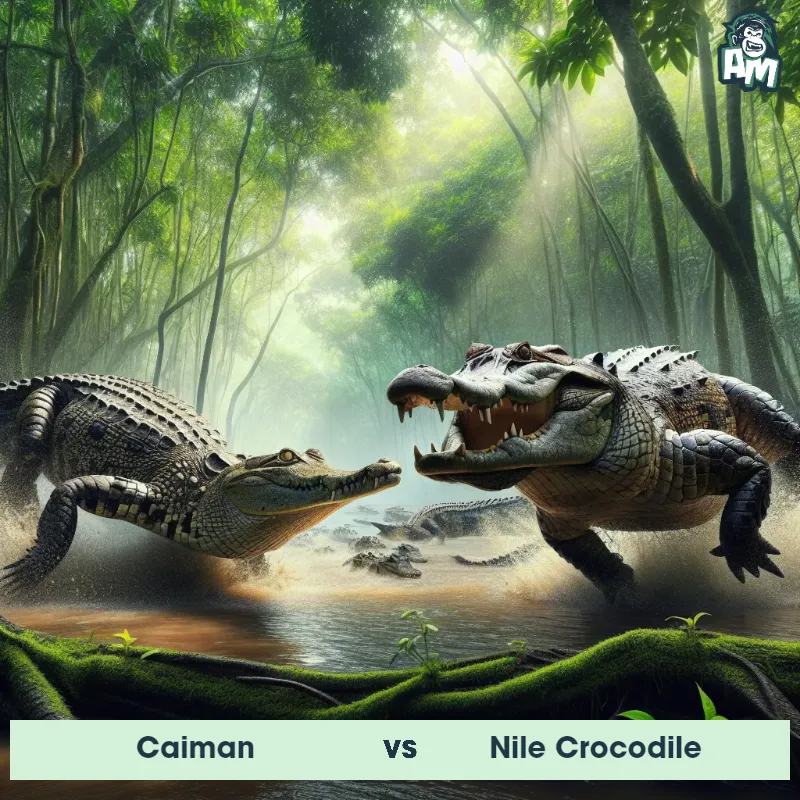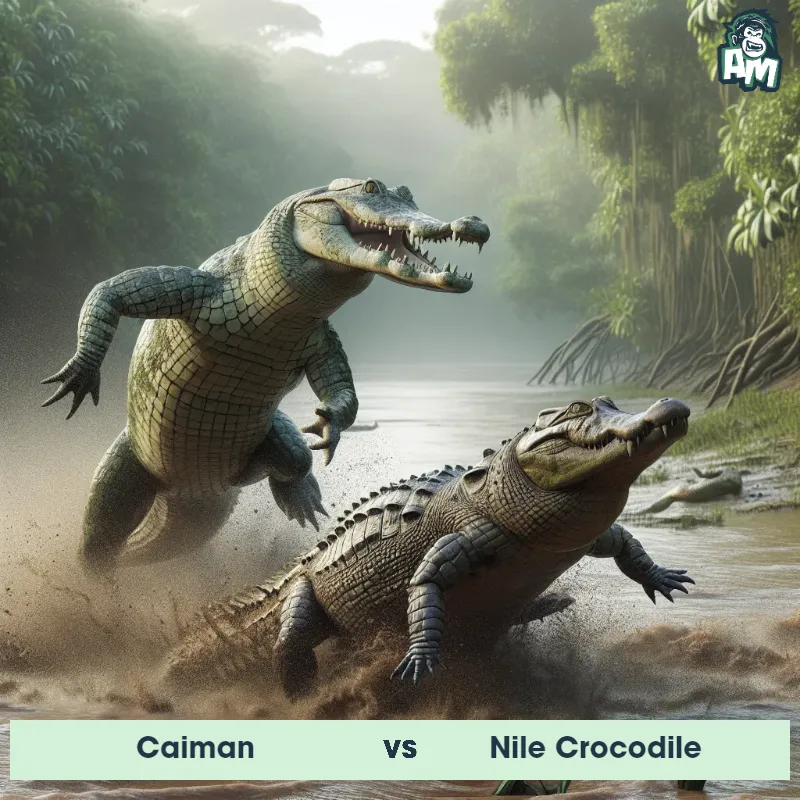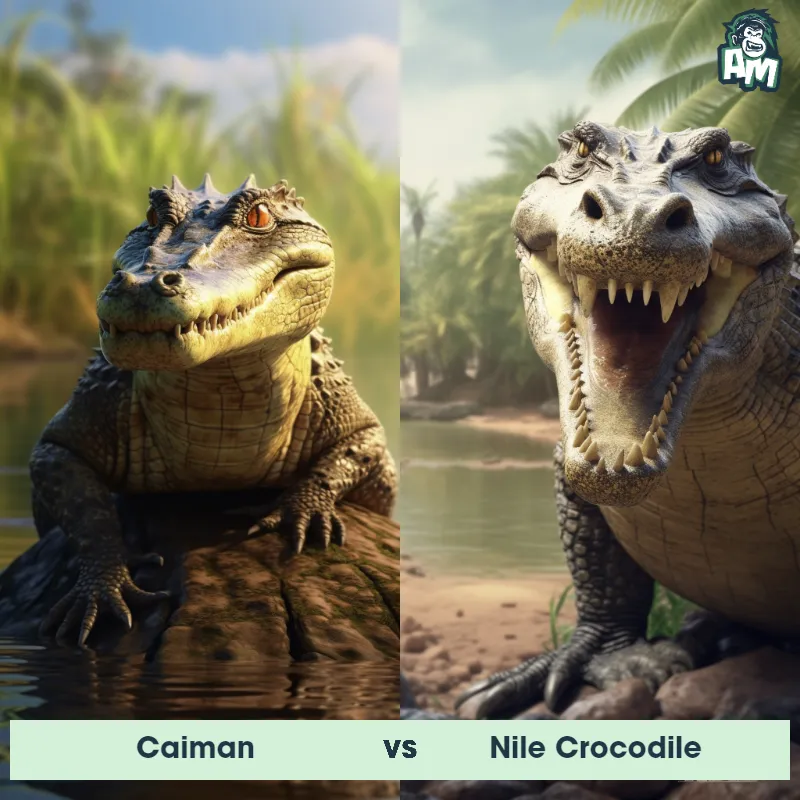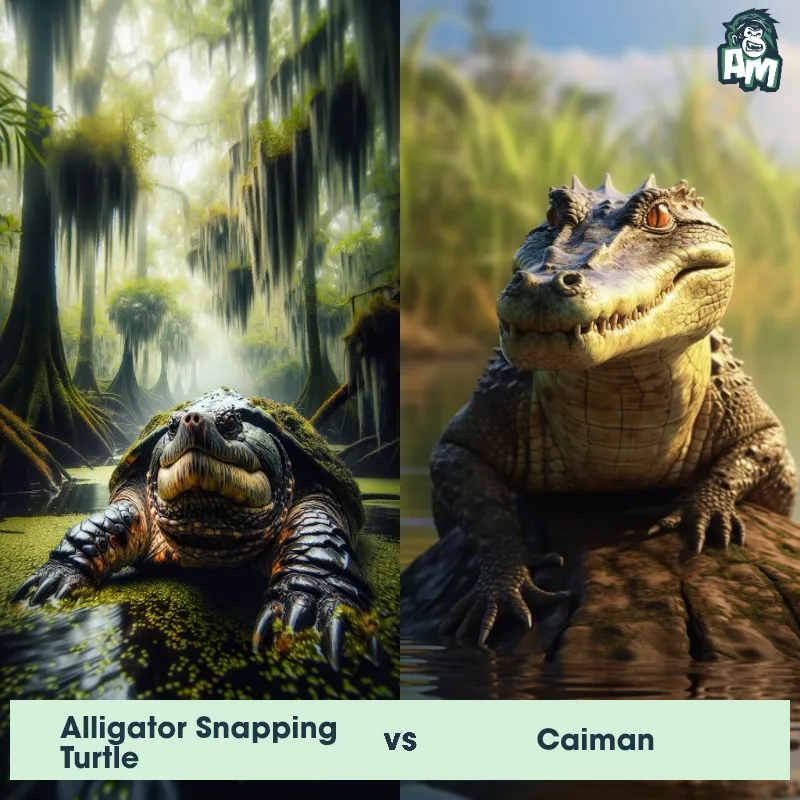The Caiman
The Caiman, also known as the Spectacled Caiman, is a medium-sized reptile belonging to the Alligatoridae family. With its stout body, powerful jaws, and armored skin, the Caiman bears a striking resemblance to its larger relatives, the alligators and crocodiles. It can grow up to 6 feet long and weighs around 80 pounds. Its most distinctive feature is a bony ridge between its eyes, giving it the appearance of wearing spectacles. Caiman are primarily found in freshwater habitats such as rivers, swamps, and marshes in Central and South America.
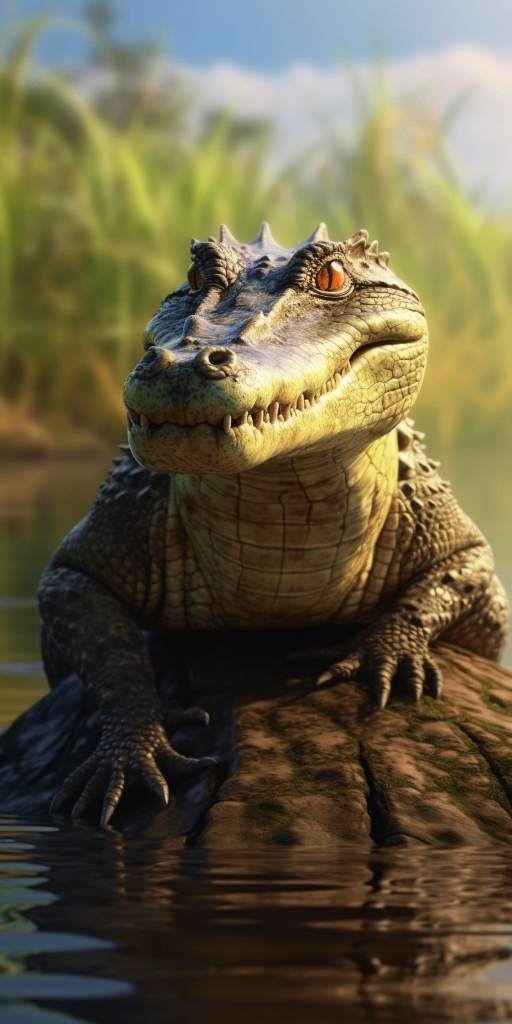
| Caiman | |
|---|---|
| Size | Up to 8 feet (2.4 meters) long |
| Weight | Up to 1000 pounds (453.6 kilograms) |
| Speed | Speed: 30 mph (48 km/hr) |
| Key Strength | Powerful jaws and muscular body |
| Biggest Weakness | Slow movement on land |
| Scientific Name | Caiman crocodilus |
| Family | Alligatoridae |
| Habitat | Freshwater rivers, lakes, and swamps |
| Geography | Central and South America |
| Diet | Fish, birds, and small mammals |
| Lifespan | 20 years - 40 years |

The Caiman
The Caiman, also known as the Spectacled Caiman, is a medium-sized reptile belonging to the Alligatoridae family. With its stout body, powerful jaws, and armored skin, the Caiman bears a striking resemblance to its larger relatives, the alligators and crocodiles. It can grow up to 6 feet long and weighs around 80 pounds. Its most distinctive feature is a bony ridge between its eyes, giving it the appearance of wearing spectacles. Caiman are primarily found in freshwater habitats such as rivers, swamps, and marshes in Central and South America.
Fun Fact: The Caiman has a unique way of cooling down in hot weather by panting like a dog, which allows it to regulate its body temperature and prevent overheating.
| Caiman | |
|---|---|
| Size | Up to 8 feet (2.4 meters) long |
| Weight | Up to 1000 pounds (453.6 kilograms) |
| Speed | Speed: 30 mph (48 km/hr) |
| Key Strength | Powerful jaws and muscular body |
| Biggest Weakness | Slow movement on land |
| Scientific Name | Caiman crocodilus |
| Family | Alligatoridae |
| Habitat | Freshwater rivers, lakes, and swamps |
| Geography | Central and South America |
| Diet | Fish, birds, and small mammals |
| Lifespan | 20 years - 40 years |
Match Highlights
Caiman Matchups
We use AI to simulate matchups between the Caiman and other animals. Our simulation considers size, strength, and natural predatory behaviors to determine the most likely outcome.
Caiman: Diet, Predators, Aggression, and Defensive Behaviors
What do Caiman eat?
Caiman are carnivorous reptiles and primarily feed on fish, birds, mammals, and small reptiles. Their diet may also include insects, crustaceans, and amphibians. Caiman are opportunistic feeders and will consume whatever prey is most readily available in their habitat.
Do Caiman have any predators?
As adults, Caiman have few natural predators due to their large size and formidable demeanor. However, Jaguar and anacondas are known to prey on Caiman, particularly on juveniles and eggs. Additionally, birds of prey such as eagles may target young Caiman.
Are Caiman aggressive?
Caiman are typically shy and reclusive animals, but they can become aggressive if provoked or threatened. They are known to display aggression during mating season or when protecting their nests and young. Caiman have powerful jaws with sharp teeth that they can use to defend themselves if necessary.
Do Caiman fight?
Caiman are known to engage in territorial fights, especially males during breeding season. These fights typically involve vocalizations, posturing, and displays of dominance. Physical combat is rare but can occur if two males are evenly matched and competing for the same territory or female.
How do Caiman defend themselves?
Caiman have several defense mechanisms to protect themselves from predators and threats. Their armored skin provides protection from physical harm, and their ability to stay partially submerged in water allows them to evade danger quickly. When faced with a threat, Caiman may hiss, use their sharp teeth, or perform bluff displays to deter potential attackers.
What is the biggest weakness of Caiman in a fight?
Despite their impressive physical attributes, Caiman have limitations when it comes to endurance and agility. In a prolonged fight, they may become fatigued quickly due to their size and weight. Additionally, their movements on land can be slower and less coordinated compared to in water, making them vulnerable to quicker and more agile predators.
Fun Fact: Unlike many other reptiles, Caiman are social creatures that form groups called pods, which can consist of several individuals. These pods not only provide them with safety in numbers but also help in hunting collectively.
Fun Fact: Caiman are known for their powerful jaws and sharp teeth, but what sets them apart from their larger relatives is their ability to replace damaged teeth throughout their lives. They can replace their teeth up to 50 times, ensuring a continuous supply of sharp and efficient hunting tools.






